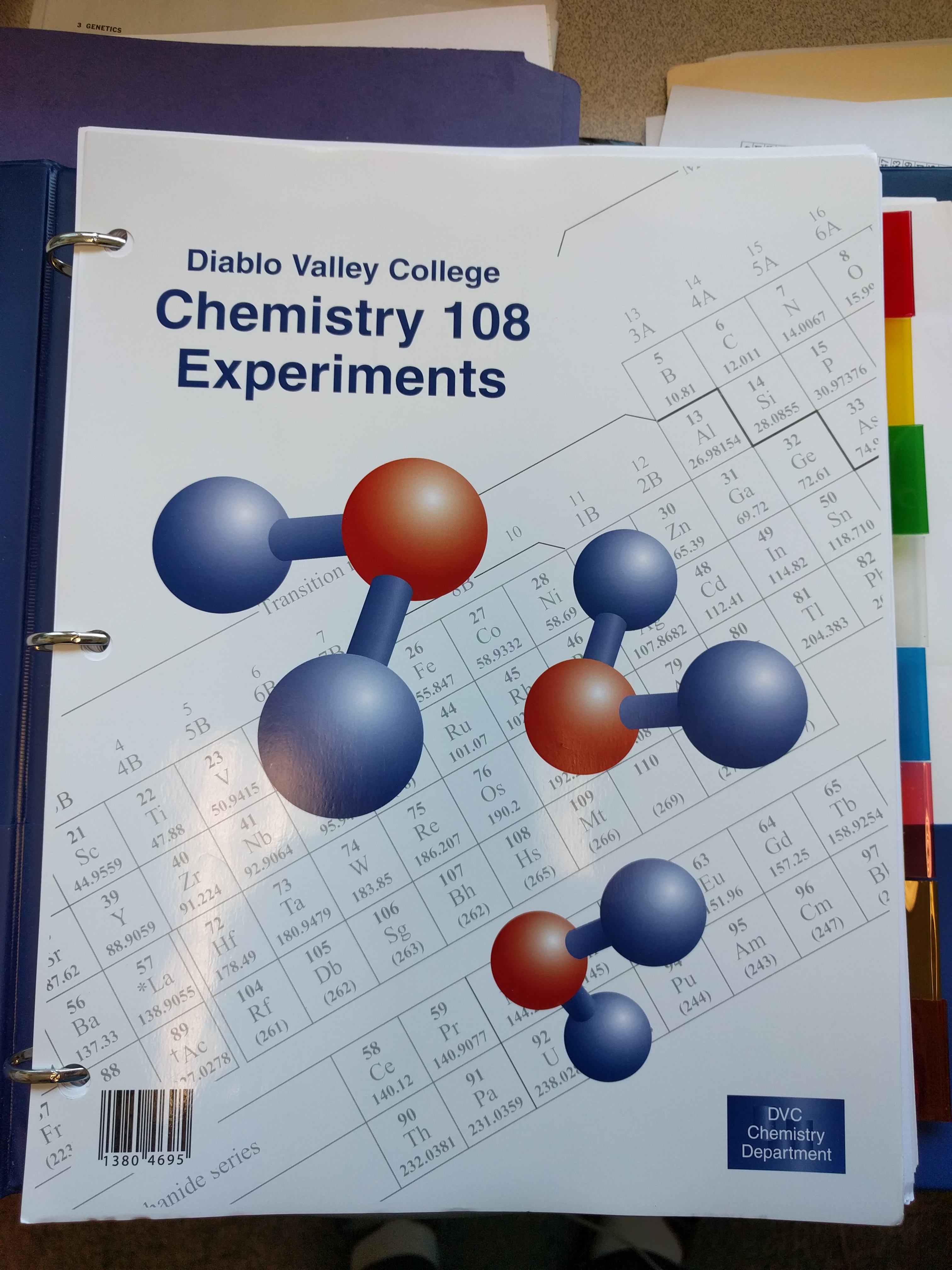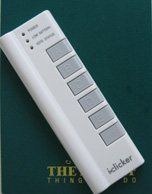 CHEMISTRY
108 / Fall 2018: SYLLABUS
CHEMISTRY
108 / Fall 2018: SYLLABUS
[Translate and/or listen to Syllabus, or any Web page] Choice of over 50 languages.
Dr. Ron Rusay Office: PS 235, tel. (925) 969-4216; Office Hours: MW 10:00-11:00, Tuesday, Thursday, Friday by appointment; daily e-mail replies usually within 24 hours.
Course Homepage: http://chemconnections.org/general/chem108/ |
| CHEM-108 Introductory Chemistry, Sections 2341 & 2343 |
| This course is an introduction to the experimental science of chemistry. Using mathematical word problems and chemical terms, the student will have an overview of inorganic chemistry. This course is appropriate for those that have no high school chemistry experience. |
| Units: | 4.00 |
| Grade Code: | Student choice |
| Repeatability: | 0 |
Prerequisites: MATH-090 or MATH 090E or MATH 090SP or one year of high school algebra or equivalent or equivalent
Recommended: Eligibility for ENGL 122 or equivalent
PLEASE CONSIDER CAREFULLY: The teaching style of this course, which is based upon current research that supports many different individual learning styles, aims to improve scientific literacy and understanding, while preparing you to succeed in subsequent follow-on chemistry courses and ultimately in various STEM related career paths. Chem 108 incorporates many innovations in guided teaching methods & practices, instructional technologies, and pedagogical applications, which depart from, but are built upon traditional textbook-lecture centered undergraduate courses. The organization and approach are likely quite different from other courses that you are experienced in and comfortable with. The material will not be treated linearly as simple page turning in relation to a required course textbook. You will be challenged to develop and use vocabulary, access a variety of information, to appraise its value, and to use it constructively in different contexts, to answer guided questions, to solve practical problems, to understand how you learn, and to build knowledge. You will have various traditional and digital tools & assets available to you that go well beyond a traditional textbook and lecture notes. You will need to decide how to use them effectively, and to develop your own personal learning plan accordingly. Not all knowledge will be provided to you to repeat back accurately for a grade as you are accustomed to in most courses. Your plan will most likely be different than anyone else's. Without a plan that you can use productively and adjust as the course progresses, you will likely not meet your personal objectives. This metacognitive approach to teaching-learning will translate to any of your other courses and more importantly empower you to effectively address any topic in any discipline at anytime in your careers. Certain student performance standards are uncompromising and unconditional. You are expected to attend each class and lab. You are expected to be punctual and arrive on time for each class and lab. You are expected to start promptly at the beginning of each class and lab. You are expected to be prepared before coming to each class and lab by being familiar with what is planned for each class and laboratory, and also be practiced in the vocabulary, skills, and concepts of the previous classes and labs. You are expected to be informed, attentive & polite to each other throughout each class and lab. If in the event that you are late or cannot attend a class or lab, please advise Dr. R. by e-mail or phone as quickly as possible and arrangements will be made to assist you.
A. Class Meetings: MW 11:10-12:35 PS277
Lab Meetings: Sec. 2341 M 12:45-3:55 PS217; Sec. 2343 W 12:45-3:55 PS217
-
Attendance is required in both lecture and laboratory. NOTE: College policy calls for dropping students from a course if 2 weeks of
class or lab are missed.
Classes begin: 8/27; Holidays: 9/3, 9/28, 11/12, 11/22-11/23
In-class Exam dates: 10/1, 11/5, 12/12
1: Principal Resources:
Chem 108 Experiments ($17.95 DVC Bookstore) (REQUIRED/MUST HAVE)
Webassign (REQUIRED/MUST HAVE): The following Webassign link and class key must be used to self-enroll on-line in Chem 108 2341-2343 using your name and DVC id number.
https://www.webassign.net/v4cgi/selfenroll/classkey.html
The following Class Key must be used to enroll:dvc 5951 9531
Detailed instructions .pdf
Follow the paragraph after using the Class Key: " I do not have an access code 1. Log in to WebAssign. 2. Select purchase access online and click Continue. 3. Select items to purchase, confirm any license agreements, and click Enter payment information. 4. Provide your payment and contact information to PayPal and click Continue. 5. Review your order and click Complete purchase. 6. Close your receipt and start working in WebAssign."Webassign enrollment provides access to all of the Webassign resources through your account, which includes An Introduction to Chemistry e-book with associated questions and broad collection of supporting resources ($41.00): Intro To Chem (With/Webassign) Bishop ISBN 0984337903 Copyright 12 Edition 1Binding Kit/Set/Package
(Hard copies of An Introduction to Chemistry, Atoms First ISBN978-0-9778105 can be purchased @ $74.45.) http://preparatorychemistry.com/Bishop_Payment_text_atoms.htm
One copy is on 3-hour reserve at the DVC Library.
 |
 |
  |
  
|
2: i<clicker (REQUIRED/MUST HAVE) Either an i-clicker app with a Reef account that enables your smart phone, tablet, or wifi connected laptop, or one of the devices shown above (old or new); purchases can be made on-line or through the DVC bookstore. (If you set up a Reef account, you will have a 2 week free-trial period, after that point, you will need to purchase a Reef subscription ($14.99) or obtain an access code through the bookstore.)
3: A personal e-mail account. (REQUIRED/MUST HAVE)
4: Chem 108 Notebook: (REQUIRED/MUST HAVE) 3 ring recommended
5: Lab safety glasses with side shields or goggles. (REQUIRED/MUST HAVE)
6: Access to the Internet (Can be limited, such as only on DVC Campus, but (REQUIRED/MUST HAVE)